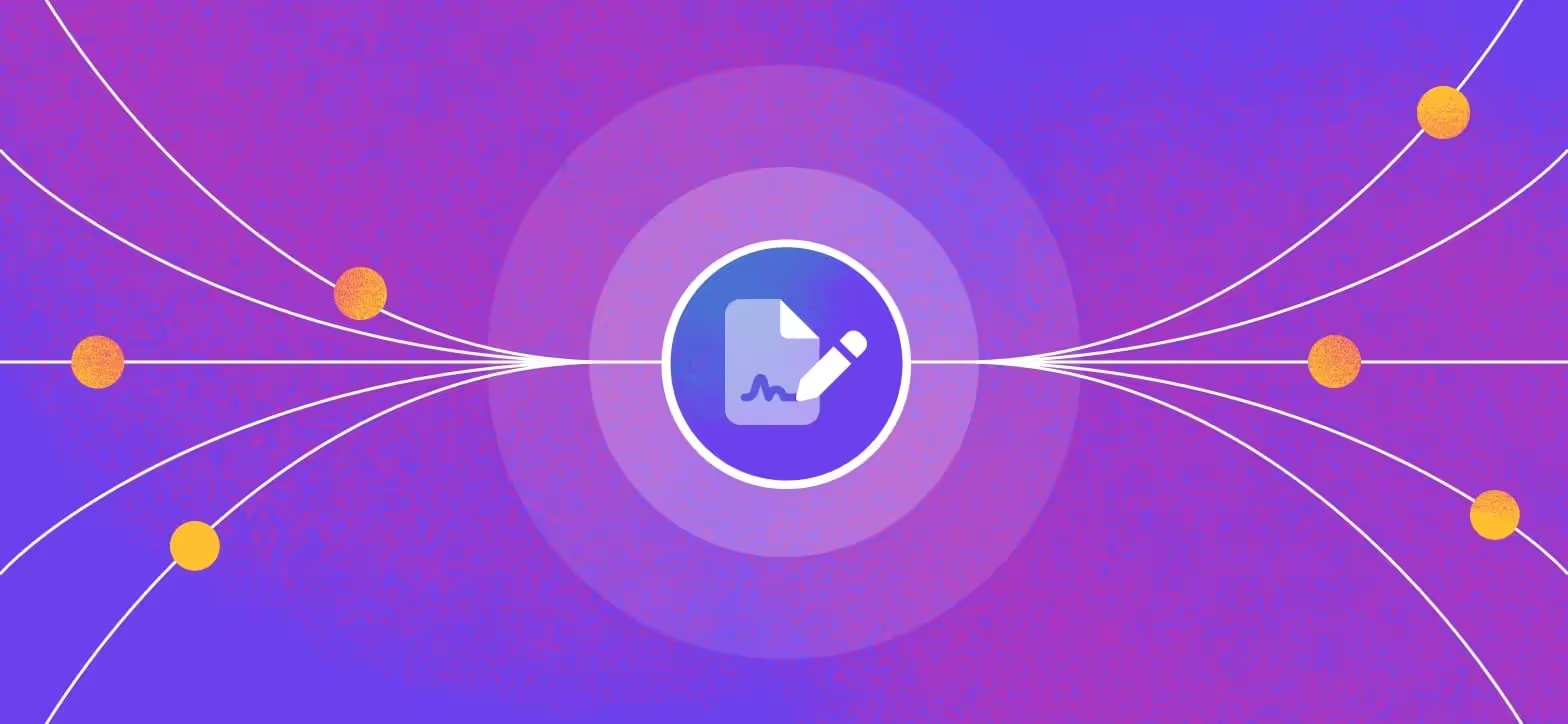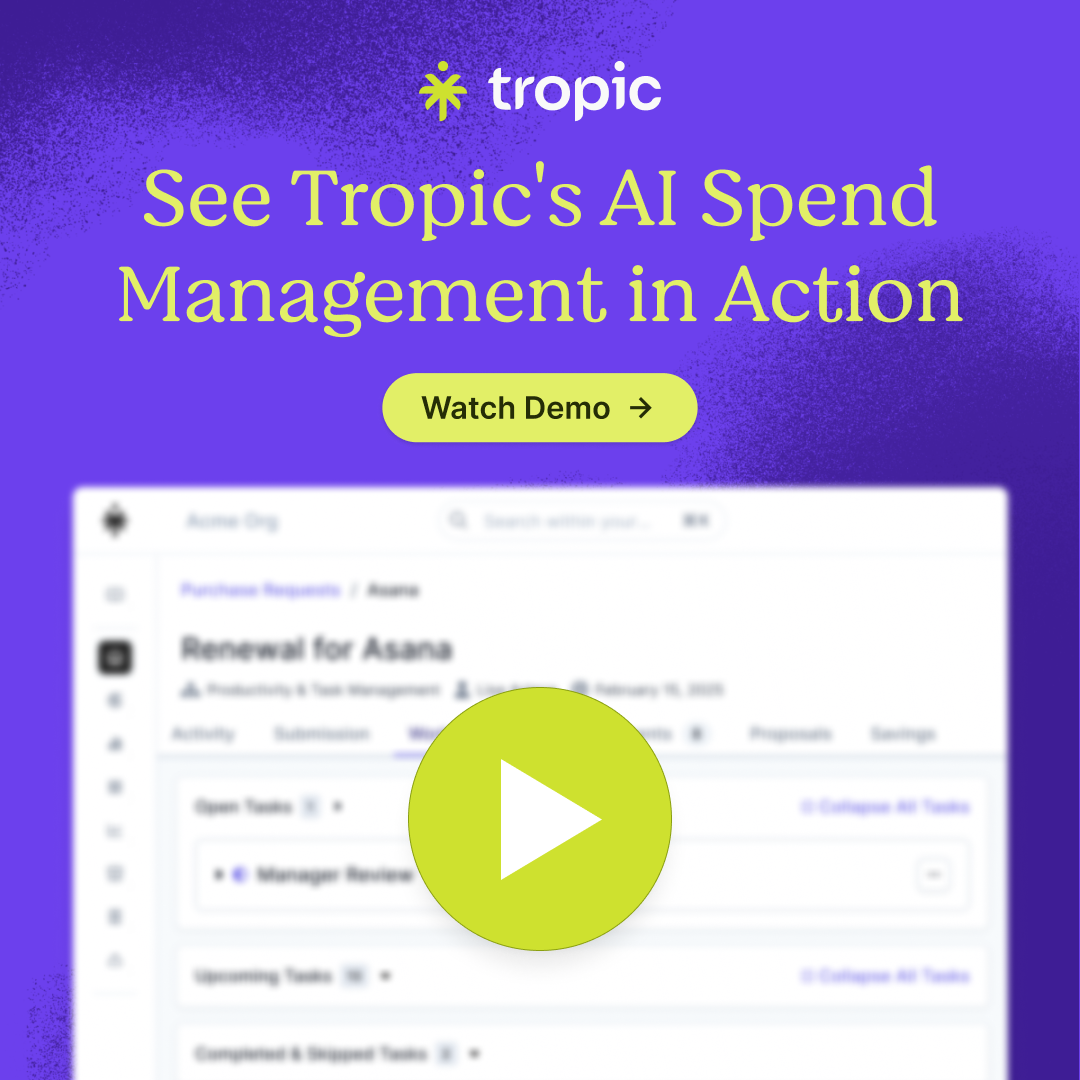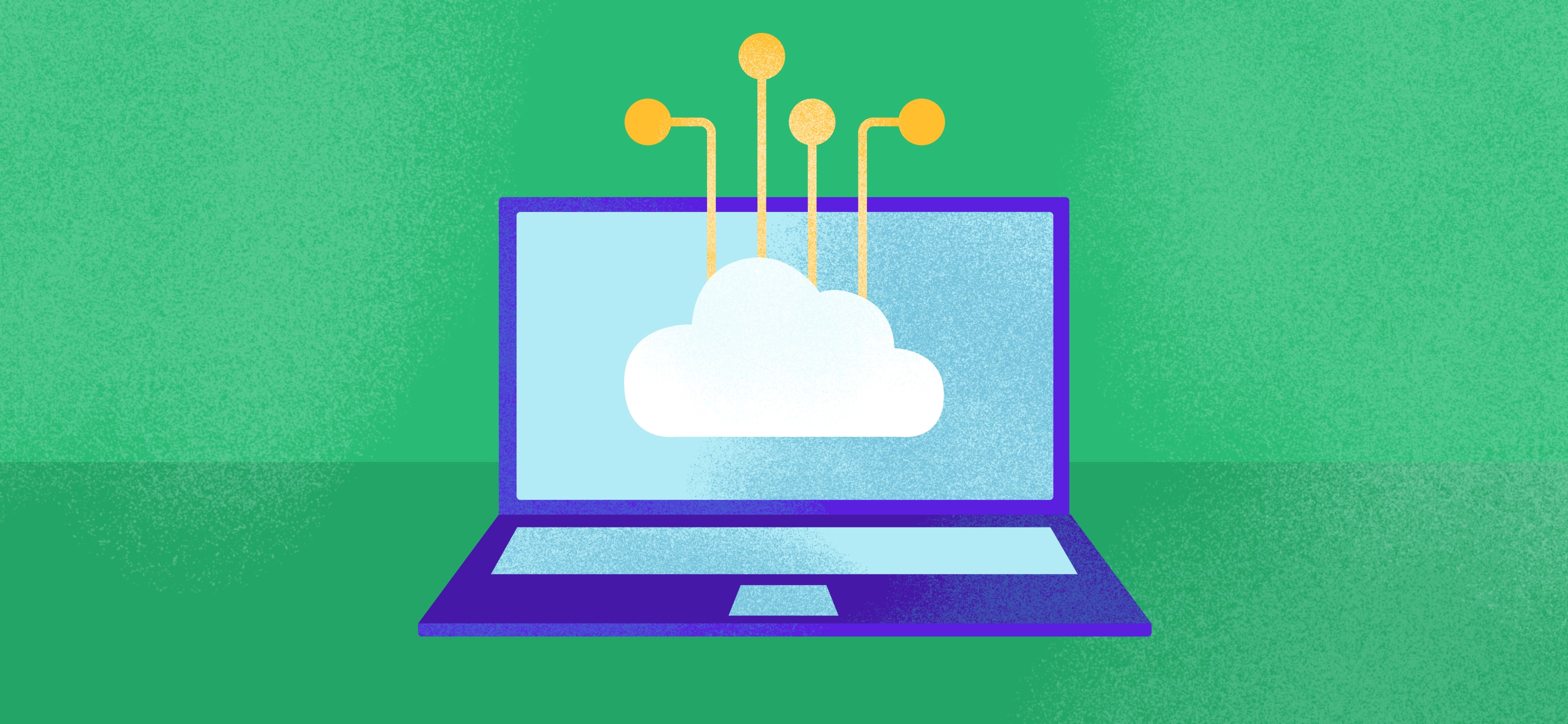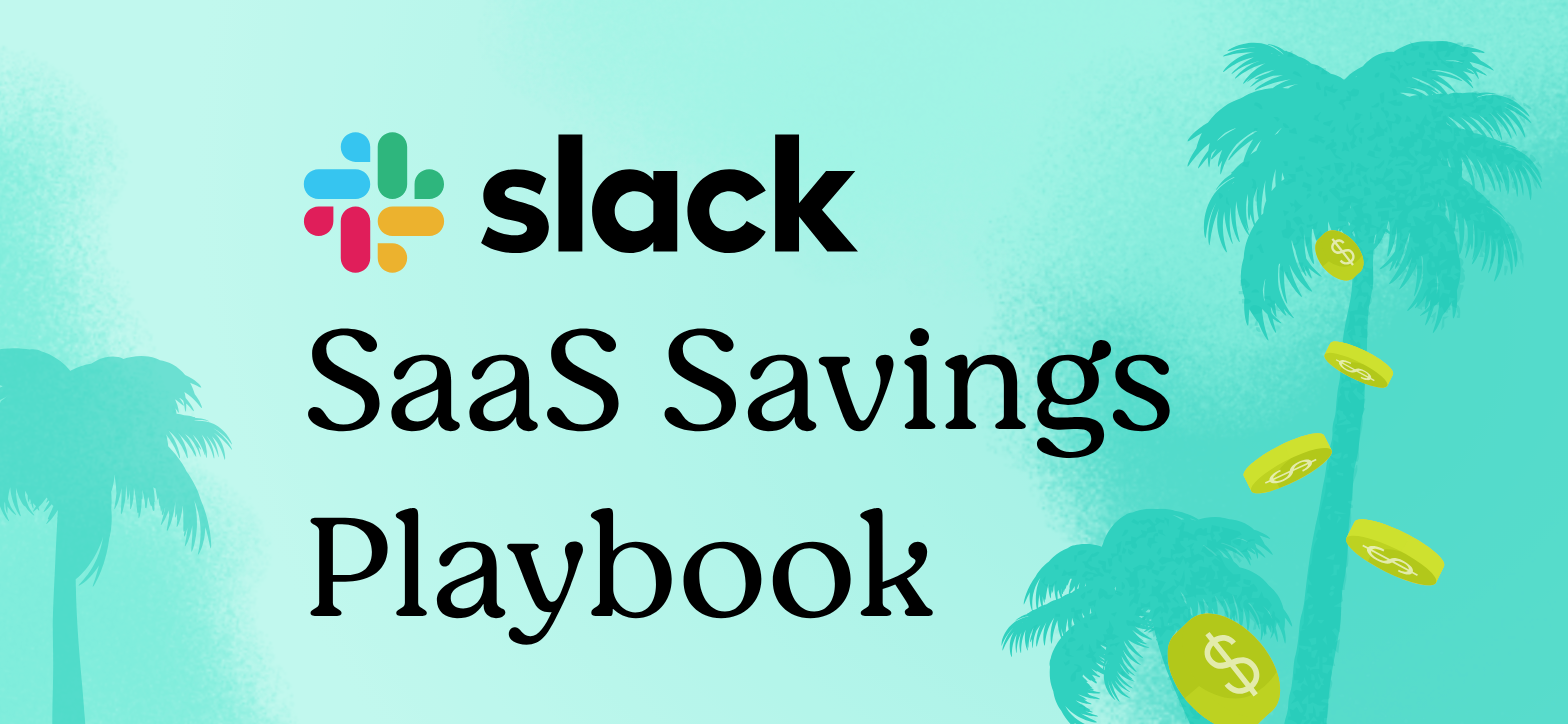Procurement is how your company acquires the goods and services needed to operate. Sounds straightforward, but it's become one of the most complex and costly functions in modern business. Finance and procurement teams spend millions annually on software, services, and supplies, yet most lack the visibility and intelligence needed to optimize this spending effectively.
The stakes are high. Poor procurement leads to overpaying for software, duplicate subscriptions draining budgets, surprise renewals, and missed savings opportunities. But strategic procurement powered by AI and comprehensive market intelligence transforms this cost center into a value driver, delivering 15-30% savings while strengthening supplier relationships and operational efficiency.
This guide breaks down everything you need to know about procurement: what it is, how it works, the challenges teams face, and how intelligent procurement platforms are revolutionizing the process. We'll explore real strategies for optimizing your procurement function, with particular focus on software procurement, where the biggest opportunities exist for companies to recapture value.
What is Procurement?
Procurement is the strategic end-to-end process of acquiring goods and services your business needs to operate. It encompasses identifying requirements, researching suppliers, evaluating options, negotiating contracts, executing purchases, managing vendor relationships, and continuously optimizing spending.
Effective procurement goes far beyond placing orders. It involves:
- Strategic planning to align purchases with business objectives and budgets
- Market research to identify the best suppliers and understand competitive pricing
- Negotiation to secure favorable pricing, terms, and service level agreements
- Risk management to ensure supplier reliability, compliance, and business continuity
- Relationship management to build partnerships that deliver long-term value
- Continuous optimization to identify savings opportunities and improve processes
Modern procurement has evolved dramatically with technology. Leading organizations now leverage AI-powered platforms that analyze billions in spending data, provide real-time market intelligence, automate manual workflows, and deliver insights that individual companies cannot develop independently.
This transformation is particularly evident in software procurement, where companies spend millions on SaaS subscriptions yet often lack visibility into what they're buying, from whom, and at what cost.
Why Procurement Matters More Than Ever
Procurement directly impacts your bottom line and competitive position. Organizations with strategic procurement functions consistently outperform those treating it as transactional purchasing.
Cost Control and Savings
Strategic procurement generates measurable savings through better negotiations, supplier consolidation, volume discounts, and elimination of wasteful spending. Companies with optimized procurement typically save 15-30% on major spending categories compared to ad-hoc buying approaches. For software spending specifically, intelligent procurement often uncovers millions in waste from duplicate tools, unused licenses, and unfavorable contract terms.
Operational Efficiency
Well-executed procurement eliminates delays, reduces cycle times, and ensures your teams get what they need when they need it. Automated workflows, standardized processes, and centralized systems enable procurement to scale without proportional headcount increases.
Risk Management
Procurement plays a critical role in managing supplier risk, ensuring compliance with regulations, maintaining business continuity, and protecting against supply chain disruptions. Thorough vendor evaluations, contract management, and ongoing monitoring minimize risks that could impact operations or create legal exposure.
Strategic Advantage
Procurement isn't just about cost savings. Strong supplier relationships provide preferential treatment, early access to innovations, collaborative problem-solving, and flexibility during challenges. These partnerships create competitive advantages that purely transactional relationships cannot deliver.
Procurement vs. Purchasing: Understanding the Difference
While often used interchangeably, procurement and purchasing represent different scopes within supply chain management.
Procurement is the comprehensive strategic function encompassing the entire supplier lifecycle. It includes market research, supplier evaluation, relationship management, contract negotiation, risk assessment, performance monitoring, and continuous optimization. Procurement takes a long-term view focused on total cost of ownership, strategic value, and supplier partnerships that benefit the organization over time.
Purchasing is the tactical execution subset focused on transactional buying activities. It involves creating purchase orders, processing invoices, tracking deliveries, and handling routine vendor communications. Purchasing executes the buying decisions that procurement strategically develops.
Think of it this way: procurement develops the strategy for what to buy, from whom, and under what terms. Purchasing executes those transactions efficiently. Both are essential, but procurement provides the strategic thinking while purchasing handles operational execution.
Types of Procurement
Organizations engage in several distinct procurement categories, each requiring specialized approaches.
Direct Procurement
Direct procurement involves acquiring materials and components that become integral parts of your products sold to customers. For manufacturing companies, this includes raw materials, components, and parts that physically constitute finished goods.
Direct procurement directly impacts production capacity, product quality, manufacturing costs, and delivery timelines. Supply chain disruptions in direct procurement can halt operations, making supplier reliability absolutely critical. Organizations maintain strategic relationships with direct procurement vendors and often implement just-in-time inventory systems to optimize working capital.
Indirect Procurement
Indirect procurement covers goods and services supporting operations without becoming part of your final products. This includes office supplies, IT equipment, facilities maintenance, professional services, travel, marketing services, and HR functions.
While indirect procurement doesn't directly impact products sold, it enables organizational productivity. Many companies discover their greatest savings opportunities here through supplier consolidation, contract standardization, and improved visibility into decentralized spending that often happens without procurement oversight.
Software and SaaS Procurement
Software procurement has become one of the most critical and complex categories as organizations digitize operations and adopt cloud technologies. The average company now uses 371 SaaS applications, spending millions annually on software subscriptions.
SaaS procurement presents unique challenges:
Subscription-based pricing creates recurring costs that compound over time versus one-time purchases. A $10,000 monthly subscription becomes $120,000 annually and $360,000 over three years, yet teams often think of it as a one-time expense.
Per-user licensing means costs fluctuate with headcount and require ongoing management. Companies frequently pay for inactive users or employees who left months ago.
Auto-renewal clauses trigger surprise expenses when teams forget renewal dates or fail to review contracts proactively. Many organizations discover too late they've renewed tools at list price when significant discounts were available.
Shadow IT proliferation allows departments to adopt tools without procurement involvement. Marketing adopts its own tools, engineering chooses its platforms, sales implements its systems—often with overlapping functionality and zero visibility for procurement teams.
Complex licensing terms vary dramatically across vendors, making standardization difficult and creating opportunities for vendors to charge for unused capacity or features.
Effective SaaS procurement requires specialized intelligence. Leading organizations now use AI-powered platforms that automatically discover all applications (including shadow IT), track usage and adoption, identify optimization opportunities, and provide comprehensive market data for negotiations. These platforms leverage spend data from thousands of companies to deliver pricing benchmarks and negotiation strategies that individual teams cannot develop independently.
Services Procurement
Services procurement involves acquiring professional services including consulting, legal counsel, IT support, marketing agencies, design work, and contingent labor. Services procurement emphasizes provider expertise, past performance, cultural fit, and deliverable quality over simple price comparison.
Successful services procurement requires clearly defined scopes of work, measurable deliverables, performance metrics, and active relationship management throughout engagements.
Sustainable Procurement
Sustainable procurement integrates environmental, social, and governance (ESG) criteria into supplier decisions. Organizations evaluate suppliers on carbon footprint, labor practices, ethical governance, diversity, and environmental impact alongside traditional cost and quality considerations.
Sustainable procurement helps companies meet corporate responsibility commitments, satisfy investor expectations, comply with environmental regulations, and appeal to customers who prioritize ethical business practices.
How the Procurement Process Works
Strategic procurement follows a systematic approach ensuring organizations acquire the right goods and services at optimal value while managing risk.
1. Identify Needs and Define Requirements
Procurement begins with clearly understanding what your organization needs. Stakeholders define specific requirements including functionality, quality standards, volumes, delivery timelines, budget constraints, and compliance requirements.
For software procurement, this involves assessing required capabilities, integration needs, security standards, scalability expectations, and user experience priorities. The key is getting detailed and specific—vague requirements lead to poor vendor selection and misaligned expectations.
2. Research the Market and Evaluate Suppliers
Once requirements are clear, procurement teams research potential suppliers. This involves evaluating market options based on capabilities, pricing, reputation, financial stability, customer reviews, and strategic fit.
The most effective teams leverage comprehensive market intelligence rather than relying solely on vendor marketing and sales pitches. Platforms like Tropic provide access to $15B+ in spend data spanning thousands of companies and negotiated contracts, enabling procurement teams to identify optimal vendors and understand realistic pricing before entering discussions.
3. Request Proposals and Compare Options
For significant purchases, procurement teams issue Requests for Proposal (RFPs) or Requests for Quote (RFQs) to gather standardized information from competing vendors. This enables objective comparison across price, capabilities, implementation support, and terms.
Evaluation criteria typically include total cost of ownership, feature alignment, integration capabilities, security standards, vendor stability, customer support quality, and implementation complexity.
4. Negotiate Terms and Contracts
Negotiation represents one of procurement's most value-creating activities. Skilled negotiation secures favorable pricing, payment terms, service level agreements, warranties, termination rights, and compliance provisions.
For SaaS contracts, critical negotiation points include subscription pricing, per-user costs, overage charges, auto-renewal terms, price increase caps, data ownership rights, and exit provisions.
The challenge most procurement teams face is lack of negotiation leverage and market intelligence. What should you pay? What terms are standard versus vendor-favorable? How do peer companies structure similar agreements?
This is where AI-powered procurement intelligence creates transformational advantage. Tropic's platform, trained on $15B+ in spend data and thousands of negotiated contracts, provides specific pricing targets and negotiation strategies proven effective across comparable deals. Instead of negotiating blind, procurement teams enter discussions armed with comprehensive data showing exactly what outcomes they should target—consistently achieving 15-30% savings versus initial vendor proposals.
5. Execute Purchase and Onboard Vendor
Once negotiations conclude and contracts are finalized, procurement executes purchases through formal purchase orders. This involves securing necessary internal approvals from legal, security, finance, and business stakeholders depending on purchase size and risk profile.
For software, execution includes configuring access, provisioning licenses, establishing billing, completing security reviews, and coordinating implementation support.
6. Manage Relationships and Monitor Performance
Procurement responsibilities extend well beyond purchase execution. Ongoing vendor management ensures suppliers meet contractual obligations, maintain quality standards, deliver on time, and provide adequate support.
Effective vendor management includes regular performance reviews, relationship maintenance, issue resolution, compliance monitoring, and continuous improvement discussions. For software vendors, this involves tracking system performance, monitoring user adoption, assessing support responsiveness, and evaluating security incident handling.
7. Optimize and Renew Strategically
As contracts approach renewal, procurement teams reassess whether agreements still deliver value. This involves analyzing usage data, evaluating alternative vendors, benchmarking current pricing against market rates, and determining whether to renew, renegotiate, or transition to different solutions.
SaaS renewals present particularly significant optimization opportunities. Organizations frequently discover they're paying for unused licenses, redundant applications, or features they don't use. AI-powered procurement platforms automatically identify these inefficiencies by analyzing usage patterns and comparing contracted licenses against actual utilization.
Smart procurement teams treat every renewal as an opportunity to improve terms and reduce costs. With comprehensive market intelligence, they leverage competitive alternatives, demonstrate reduced usage needs, or consolidate tools to negotiate significant savings—often achieving 20-30% reductions at renewal.
The Biggest Procurement Challenges Teams Face
Even well-intentioned procurement functions encounter significant challenges that limit effectiveness and prevent optimal outcomes.
Challenge 1: Limited Visibility into Spending
Most organizations lack comprehensive visibility into what they're buying, from whom, and at what cost. Decentralized purchasing, shadow IT, and fragmented systems mean procurement teams often discover spending only after it's already happening.
For software spending especially, departments adopt tools without procurement involvement. Marketing implements martech, engineering adopts dev tools, sales deploys enablement platforms—creating a proliferation of subscriptions that procurement never sees until renewal notices arrive.
The Impact: Without visibility, you can't optimize. Organizations overpay for duplicate tools, miss consolidation opportunities, and lack leverage in negotiations because they don't understand their total spending with vendors.
The Solution: Implement AI-powered platforms that automatically discover all spending including shadow IT. Tropic's intelligent discovery continuously identifies every application in your environment, providing comprehensive visibility that manual tracking and spreadsheets simply cannot match.
Challenge 2: Insufficient Market Intelligence for Negotiations
Procurement teams struggle to negotiate effectively without knowing what they should pay. What's fair pricing for this software? What terms should you expect? How do comparable companies structure similar agreements?
Vendors exploit this information asymmetry. They know exactly what every other customer pays, what terms they accept, and how to position proposals. Procurement teams negotiate blind, accepting vendor framing and missing significant savings opportunities.
The Impact: Organizations routinely overpay by 15-30% because they lack leverage and intelligence to negotiate effectively. They accept unfavorable terms, miss standard provisions, and leave money on the table.
The Solution: Leverage comprehensive market data spanning thousands of companies and negotiated contracts. Tropic's platform, built on $15B+ in spend intelligence, provides specific pricing benchmarks and negotiation strategies that level the playing field—enabling procurement teams to consistently secure optimal outcomes.
Challenge 3: Manual Processes That Don't Scale
Many procurement teams still rely on email, spreadsheets, and manual workflows. Every purchase request triggers email chains, manual reviews, scattered approvals, and time-consuming coordination across stakeholders.
These manual processes create bottlenecks, introduce errors, extend cycle times, and prevent procurement from scaling as organizations grow. Teams spend more time on administrative coordination than strategic initiatives.
The Impact: Procurement becomes an operational bottleneck. Requests languish for weeks, business teams bypass procurement to move faster, and opportunities for savings and optimization get missed because teams lack bandwidth.
The Solution: Automate procurement workflows through intelligent platforms that handle intake, routing, approvals, purchase order generation, and vendor coordination. Automation reduces cycle times by 50% or more while freeing procurement professionals to focus on strategy, relationships, and optimization.
Challenge 4: Reactive Rather Than Proactive Management
Most procurement teams operate reactively: responding to requests, processing renewals as they arise, and addressing issues after they become problems. This reactive approach misses optimization opportunities and creates constant urgency rather than strategic planning.
The Impact: Reactive procurement means missed savings, last-minute renewal scrambles, and insufficient time for proper evaluation and negotiation. Organizations renew at list price because they discover renewal dates too late to explore alternatives.
The Solution: Implement systems that provide proactive alerts, identify optimization opportunities months in advance, and enable strategic planning for major renewals. AI-powered platforms continuously analyze your portfolio, flagging unused licenses, redundant tools, and upcoming renewals with sufficient lead time for thoughtful evaluation and negotiation.
Challenge 5: Insufficient Expertise and Resources
Building world-class procurement expertise internally is expensive and difficult. Most organizations lack the resources to develop category specialists across all spending areas, negotiate effectively with sophisticated vendors, and stay current on market dynamics.
The Impact: Procurement teams get outmaneuvered by vendors who negotiate contracts daily. Organizations accept suboptimal outcomes because they lack the specialized expertise and bandwidth to drive better results.
The Solution: Partner with procurement platforms that combine technology and expert services. Tropic provides both intelligent software and dedicated procurement professionals who handle complex negotiations on your behalf, leveraging market intelligence and negotiation expertise that most companies cannot build internally.
How AI-Powered Procurement Transforms Results
Artificial intelligence is revolutionizing procurement, enabling capabilities that manual processes and traditional software simply cannot deliver.
Comprehensive Spend Discovery and Visibility
AI automatically discovers all organizational spending including shadow IT that bypasses traditional procurement. Machine learning analyzes purchasing patterns, identifies vendors, categorizes spending, and maps your complete vendor ecosystem—providing the comprehensive visibility that manual tracking cannot achieve.
Tropic's AI continuously monitors your environment, automatically identifying every SaaS application and subscription. This eliminates the visibility gap that prevents optimization and ensures procurement teams understand the full scope of what the organization is buying.
Intelligent Market Benchmarking
AI trained on billions in spending data provides accurate pricing benchmarks and terms intelligence that individual companies cannot develop independently. Instead of negotiating blind, procurement teams know exactly what they should pay and what terms they should expect.
Tropic's platform analyzes $15B+ in spend across thousands of companies and negotiated contracts. This creates the industry's most comprehensive procurement intelligence, enabling teams to enter every negotiation with data-backed targets that consistently deliver 15-30% savings versus initial proposals.
Proactive Optimization Recommendations
AI continuously analyzes spending patterns, usage data, and contract terms to identify optimization opportunities. Discover unused licenses, redundant applications, favorable renewal timing, and consolidation possibilities that manual review would miss.
These proactive insights transform procurement from reactive order-taking to strategic value creation. Instead of discovering waste after years of overpaying, AI surfaces optimization opportunities immediately—enabling continuous improvement rather than periodic reviews.
Automated Workflow Orchestration
AI-powered automation handles routine procurement tasks including intake, approval routing, purchase order generation, vendor onboarding, and renewal tracking. Intelligent workflows ensure requests flow to appropriate stakeholders based on spending thresholds, categories, or risk profiles.
This automation reduces procurement cycle times by 50% or more while eliminating manual errors and freeing teams to focus on strategic initiatives, relationship management, and complex negotiations.
Predictive Analytics and Planning
Advanced AI provides predictive insights that enable proactive planning. Forecast future spending based on growth trajectories, identify budget risks before they materialize, and model the impact of consolidation or vendor changes.
This predictive capability transforms procurement from reactive firefighting to strategic planning that aligns with organizational objectives and budgets.
Stop Overpaying: How Tropic Delivers Unmatched Procurement Intelligence
Tropic has built the procurement platform finance and operations leaders need to finally gain control over their spending and capture every opportunity for savings.
$15B+ in Spend Intelligence You Can't Get Anywhere Else
Tropic's AI is trained on $15B+ in spend data spanning thousands of companies and negotiated contracts—creating the industry's most comprehensive procurement intelligence. This proprietary dataset enables our platform to provide accurate pricing benchmarks, identify optimal negotiation strategies, and deliver recommendations that consistently produce 15-30% savings.
When you enter a negotiation with Tropic's intelligence, you know exactly what pricing and terms you should target. No more negotiating blind. No more accepting vendor framing. You negotiate from a position of data-backed strength that individual companies simply cannot develop independently.
Complete Visibility into Your Vendor Ecosystem
Tropic's AI automatically discovers your entire vendor landscape including shadow IT that bypasses traditional procurement. You'll finally see every application, subscription, and vendor relationship—enabling the comprehensive visibility necessary for effective management and optimization.
Our intelligent discovery continuously monitors your environment, identifying new purchases and ensuring procurement maintains current, accurate information rather than relying on outdated spreadsheets or incomplete data.
Proactive Optimization That Finds Money You're Leaving on the Table
Tropic doesn't just provide visibility—our AI continuously analyzes your spending to identify specific optimization opportunities. We surface unused licenses you're paying for, redundant tools with overlapping functionality, favorable consolidation opportunities, and upcoming renewals that require attention.
These proactive insights enable continuous optimization rather than annual reviews. You'll capture savings opportunities immediately instead of discovering waste years later after millions have been unnecessarily spent.
Automated Workflows That Cut Cycle Times in Half
Tropic automates your entire procurement workflow from initial request through final payment. Intelligent routing ensures approvals flow to appropriate stakeholders, purchase orders generate automatically, and vendors are onboarded efficiently without manual coordination.
Organizations using Tropic typically reduce procurement cycle times by 50% or more—accelerating purchases while maintaining proper controls and oversight.
Expert Procurement Services That Negotiate on Your Behalf
Beyond software, Tropic provides dedicated procurement professionals who handle complex negotiations on your behalf. Our experts leverage Tropic's comprehensive market intelligence to secure optimal outcomes that in-house teams often struggle to achieve.
This combination of intelligent technology and expert services delivers results that neither software-only solutions nor traditional consulting engagements can match.
Real Results: What Companies Achieve with Tropic
Organizations across industries are transforming their procurement operations and capturing significant value with Tropic's intelligent platform.
Fast-growing technology company discovered $3.2M in annual waste across their SaaS stack through Tropic's automated discovery. Our AI identified 47 redundant applications, 892 unused licenses, and multiple instances where departments were paying for identical functionality. After consolidation and negotiation, they now save $3.2M annually while improving the user experience through standardized, integrated tools.
Mid-market healthcare provider lacked procurement resources and consistently overpaid on renewals. Tropic's expert services team handled their three largest software renewals, leveraging our $15B+ intelligence to secure pricing 28% below initial proposals—generating $847,000 in first-year savings. The procurement cycle time decreased from 12 weeks to 3 weeks through our automated workflows.
Financial services firm with 2,000 employees had zero visibility into their complete SaaS portfolio. Tropic's discovery identified 374 applications versus the 150 they thought they had. Our AI surfaced $1.8M in optimization opportunities from unused capacity, duplicate tools, and opportunities to consolidate vendors for volume discounts. They've now captured $1.4M of those savings with ongoing optimization identifying additional opportunities quarterly.
These results demonstrate the transformational impact of combining comprehensive market intelligence, AI-powered automation, and expert procurement services. Organizations using Tropic consistently achieve 15-30% savings while dramatically reducing procurement cycle times and transforming procurement from cost center to strategic value driver.
Take Control of Your Procurement Spending
Finance and procurement leaders: you're likely overpaying for software and missing millions in savings opportunities. Shadow IT is proliferating, renewals are arriving with surprise price increases, and you lack the visibility and intelligence needed to negotiate effectively with vendors who do this for a living.
Tropic gives you the visibility, intelligence, and automation needed to finally gain control. Our AI discovers every application in your environment, provides the market intelligence to negotiate from strength, and continuously identifies optimization opportunities that manual processes miss.
Organizations using Tropic achieve measurable results within 90 days:
- 15-30% average savings on software spending through data-driven negotiations
- Complete visibility into spending including shadow IT
- 50% faster procurement cycles via intelligent automation
- Proactive optimization that continuously identifies savings opportunities
- Expert support from procurement professionals who negotiate on your behalf
Stop overpaying. Start optimizing. See how Tropic's intelligent procurement platform can transform your operations.
Watch our product tour to see the platform in action, or request a personalized demo to discuss your specific procurement challenges and how we can help you capture every opportunity for savings.
Frequently Asked Questions
What's the difference between strategic sourcing and procurement?
Strategic sourcing is the research and planning phase focused on identifying and evaluating potential suppliers. Procurement is the comprehensive end-to-end process that includes sourcing plus contracting, purchasing, vendor management, and ongoing optimization. Sourcing is one component within the broader procurement lifecycle.
How do I calculate ROI on procurement technology?
Calculate potential savings from better negotiations, time savings from workflow automation, cost avoidance from improved compliance, and opportunity cost of freeing your team for strategic work. Leading procurement platforms like Tropic typically deliver 10-20X ROI through savings that dwarf technology costs. Most organizations see payback within 90 days.
Can small companies benefit from AI-powered procurement?
Absolutely. Small companies often benefit most because they lack resources to build procurement expertise internally. AI-powered platforms provide enterprise-grade intelligence and capabilities that level the playing field—enabling small teams to negotiate as effectively as large corporations. Tropic works with companies of all sizes to optimize procurement operations.
How does Tropic maintain objectivity with vendor recommendations?
Tropic operates under a strict Supplier Code of Ethics that prohibits vendor payments, referral fees, or any incentives that could bias our recommendations. We're compensated solely by our customers, ensuring our AI and procurement experts always optimize for your best interests rather than vendor relationships. This independence is fundamental to delivering objective, data-driven recommendations.
What makes Tropic's market intelligence different from other platforms?
Tropic has negotiated thousands of contracts representing $15B+ in spend—creating the procurement industry's most comprehensive dataset. This proprietary intelligence powers our AI to provide pricing benchmarks and negotiation strategies that platforms without this depth of real contract data simply cannot match. When you use Tropic, you benefit from insights derived from actual negotiated outcomes across thousands of companies.







